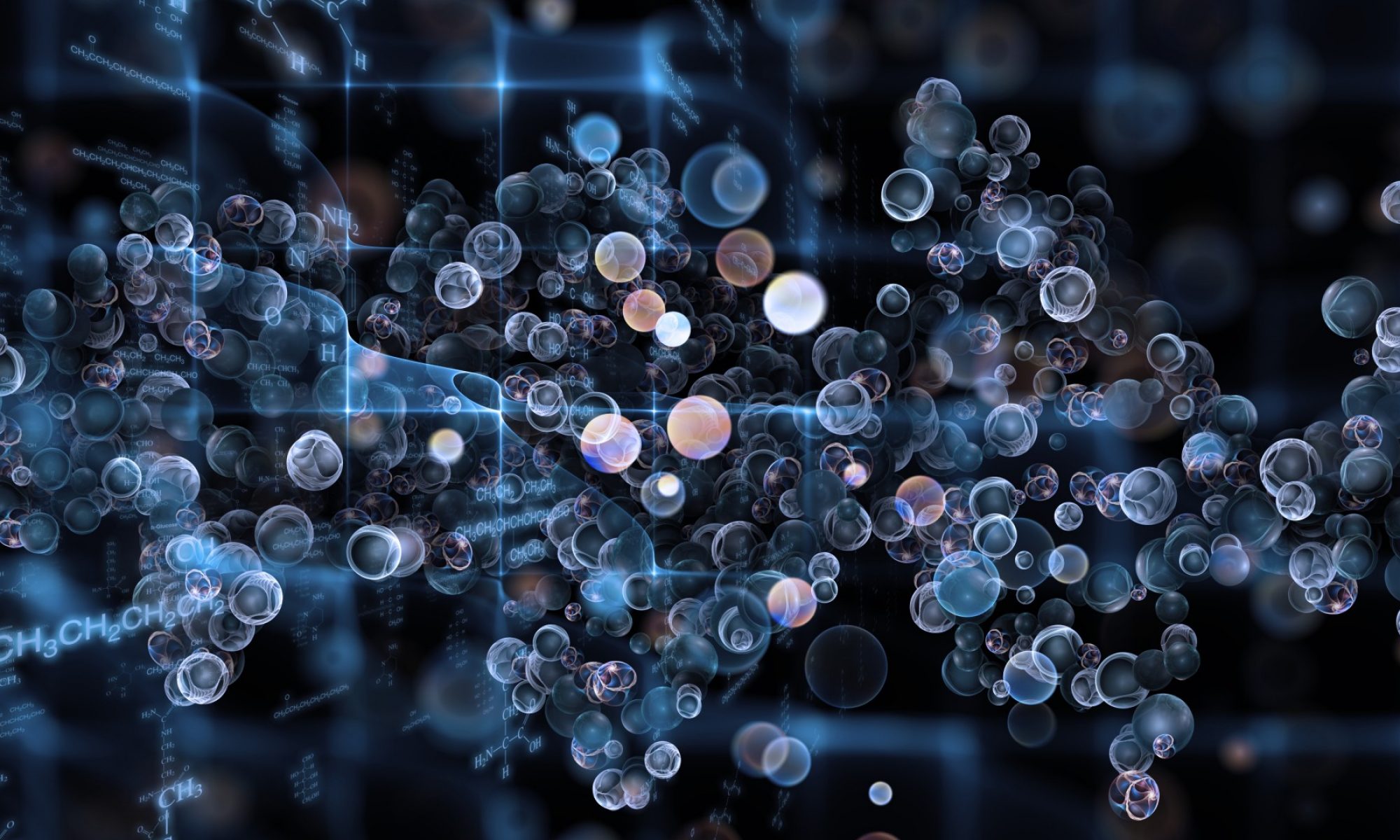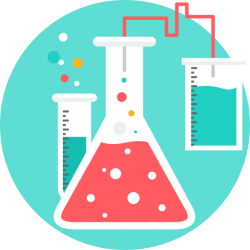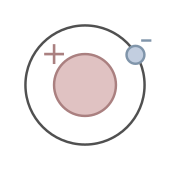WORKSHEET HERE
Hydrogen is a chemical element with symbol H and atomic number 1. With a standard atomic weight of 1.008, hydrogen is the lightest element on the periodic table. Its monatomic form (H) is the most abundant chemical substance in the Universe, constituting roughly 75% of all baryonic mass.[10][note 1] Non-remnant stars are mainly composed of hydrogen in the plasma state. The most common isotope of hydrogen, termed protium (name rarely used, symbol 1H), has one proton and no neutrons.
The universal emergence of atomic hydrogen first occurred during the recombination epoch. At standard temperature and pressure, hydrogen is a colorless, odorless, tasteless, non-toxic, nonmetallic, highly combustible diatomic gas with the molecular formula H2. Since hydrogen readily forms covalent compounds with most nonmetallic elements, most of the hydrogen on Earth exists in molecular formssuch as water or organic compounds. Hydrogen plays a particularly important role in acid–base reactions because most acid-base reactions involve the exchange of protons between soluble molecules. In ionic compounds, hydrogen can take the form of a negative charge (i.e., anion) when it is known as a hydride, or as a positively charged (i.e., cation) species denoted by the symbol H+. The hydrogen cation is written as though composed of a bare proton, but in reality, hydrogen cations in ionic compounds are always more complex. As the only neutral atom for which the Schrödinger equation can be solved analytically,[11] study of the energetics and bonding of the hydrogen atom has played a key role in the development of quantum mechanics.
Hydrogen gas was first artificially produced in the early 16th century by the reaction of acids on metals. In 1766–81, Henry Cavendish was the first to recognize that hydrogen gas was a discrete substance,[12] and that it produces water when burned, the property for which it was later named: in Greek, hydrogen means “water-former”.
Industrial production is mainly from steam reforming natural gas, and less often from more energy-intensive methods such as the electrolysis of water.[13] Most hydrogen is used near the site of its production, the two largest uses being fossil fuel processing (e.g., hydrocracking) and ammonia production, mostly for the fertilizer market. Hydrogen is a concern in metallurgy as it can embrittle many metals,[14] complicating the design of pipelines and storage tanks.[15]
Properties
Combustion

The Space Shuttle Main Engine burnt hydrogen with oxygen, producing a nearly invisible flame at full thrust.

Explosion of a hydrogen–air mixture.
Hydrogen gas (dihydrogen or molecular hydrogen)[16] is highly flammable and will burn in air at a very wide range of concentrations between 4% and 75% by volume.[17] The enthalpy of combustion is −286 kJ/mol:[18]
- 2 H2(g) + O2(g) → 2 H2O(l) + 572 kJ (286 kJ/mol)[note 2]
Hydrogen gas forms explosive mixtures with air in concentrations from 4–74% and with chlorine at 5–95%. The explosive reactions may be triggered by spark, heat, or sunlight. The hydrogen autoignition temperature, the temperature of spontaneous ignition in air, is 500 °C (932 °F).[19] Pure hydrogen-oxygenflames emit ultraviolet light and with high oxygen mix are nearly invisible to the naked eye, as illustrated by the faint plume of the Space Shuttle Main Engine, compared to the highly visible plume of a Space Shuttle Solid Rocket Booster, which uses an ammonium perchlorate composite. The detection of a burning hydrogen leak may require a flame detector; such leaks can be very dangerous. Hydrogen flames in other conditions are blue, resembling blue natural gas flames.[20]
The destruction of the Hindenburg airship was a notorious example of hydrogen combustion and the cause is still debated. The visible orange flames in that incident were the result of a rich mixture of hydrogen to oxygen combined with carbon compounds from the airship skin.
H2 reacts with every oxidizing element. Hydrogen can react spontaneously and violently at room temperature with chlorine and fluorine to form the corresponding hydrogen halides, hydrogen chloride and hydrogen fluoride, which are also potentially dangerous acids.[21]
Electron energy levels

Depiction of a hydrogen atom with size of central proton shown, and the atomic diameter shown as about twice the Bohr model radius (image not to scale)
The ground state energy level of the electron in a hydrogen atom is −13.6 eV,[22] which is equivalent to an ultraviolet photon of roughly 91 nm wavelength.[23]
The energy levels of hydrogen can be calculated fairly accurately using the Bohr model of the atom, which conceptualizes the electron as “orbiting” the proton in analogy to the Earth’s orbit of the Sun. However, the atomic electron and proton are held together by electromagnetic force, while planets and celestial objects are held by gravity. Because of the discretization of angular momentum postulated in early quantum mechanics by Bohr, the electron in the Bohr model can only occupy certain allowed distances from the proton, and therefore only certain allowed energies.[24]
A more accurate description of the hydrogen atom comes from a purely quantum mechanical treatment that uses the Schrödinger equation, Dirac equation or even the Feynman path integral formulation to calculate the probability density of the electron around the proton.[25] The most complicated treatments allow for the small effects of special relativity and vacuum polarization. In the quantum mechanical treatment, the electron in a ground state hydrogen atom has no angular momentum at all—illustrating how the “planetary orbit” differs from electron motion.
Elemental molecular forms

First tracks observed in liquid hydrogen bubble chamber at the Bevatron
There exist two different spin isomers of hydrogen diatomic molecules that differ by the relative spin of their nuclei.[26] In the orthohydrogen form, the spins of the two protons are parallel and form a triplet state with a molecular spin quantum number of 1 (1⁄2+1⁄2); in the parahydrogen form the spins are antiparallel and form a singlet with a molecular spin quantum number of 0 (1⁄2–1⁄2). At standard temperature and pressure, hydrogen gas contains about 25% of the para form and 75% of the ortho form, also known as the “normal form”.[27] The equilibrium ratio of orthohydrogen to parahydrogen depends on temperature, but because the ortho form is an excited state and has a higher energy than the para form, it is unstable and cannot be purified. At very low temperatures, the equilibrium state is composed almost exclusively of the para form. The liquid and gas phase thermal properties of pure parahydrogen differ significantly from those of the normal form because of differences in rotational heat capacities, as discussed more fully in spin isomers of hydrogen.[28] The ortho/para distinction also occurs in other hydrogen-containing molecules or functional groups, such as water and methylene, but is of little significance for their thermal properties.[29]
The uncatalyzed interconversion between para and ortho H2 increases with increasing temperature; thus rapidly condensed H2 contains large quantities of the high-energy ortho form that converts to the para form very slowly.[30] The ortho/para ratio in condensed H2 is an important consideration in the preparation and storage of liquid hydrogen: the conversion from ortho to para is exothermic and produces enough heat to evaporate some of the hydrogen liquid, leading to loss of liquefied material. Catalysts for the ortho-para interconversion, such as ferric oxide, activated carbon, platinized asbestos, rare earth metals, uranium compounds, chromic oxide, or some nickel[31] compounds, are used during hydrogen cooling.
Phases
Covalent and organic compounds
While H2 is not very reactive under standard conditions, it does form compounds with most elements. Hydrogen can form compounds with elements that are more electronegative, such as halogens (e.g., F, Cl, Br, I), or oxygen; in these compounds hydrogen takes on a partial positive charge.[33] When bonded to fluorine, oxygen, or nitrogen, hydrogen can participate in a form of medium-strength noncovalent bonding with the hydrogen of other similar molecules, a phenomenon called hydrogen bonding that is critical to the stability of many biological molecules.[34][35] Hydrogen also forms compounds with less electronegative elements, such as metals and metalloids, where it takes on a partial negative charge. These compounds are often known as hydrides.[36]
Hydrogen forms a vast array of compounds with carbon called the hydrocarbons, and an even vaster array with heteroatoms that, because of their general association with living things, are called organic compounds.[37] The study of their properties is known as organic chemistry[38] and their study in the context of living organisms is known as biochemistry.[39] By some definitions, “organic” compounds are only required to contain carbon. However, most of them also contain hydrogen, and because it is the carbon-hydrogen bond which gives this class of compounds most of its particular chemical characteristics, carbon-hydrogen bonds are required in some definitions of the word “organic” in chemistry.[37] Millions of hydrocarbons are known, and they are usually formed by complicated synthetic pathways that seldom involve elementary hydrogen.
Hydrides
Compounds of hydrogen are often called hydrides, a term that is used fairly loosely. The term “hydride” suggests that the H atom has acquired a negative or anionic character, denoted H−, and is used when hydrogen forms a compound with a more electropositive element. The existence of the hydride anion, suggested by Gilbert N. Lewis in 1916 for group 1 and 2 salt-like hydrides, was demonstrated by Moers in 1920 by the electrolysis of molten lithium hydride (LiH), producing a stoichiometry quantity of hydrogen at the anode.[40] For hydrides other than group 1 and 2 metals, the term is quite misleading, considering the low electronegativity of hydrogen. An exception in group 2 hydrides is BeH
2, which is polymeric. In lithium aluminium hydride, the AlH−
4 anion carries hydridic centers firmly attached to the Al(III).
Although hydrides can be formed with almost all main-group elements, the number and combination of possible compounds varies widely; for example, more than 100 binary borane hydrides are known, but only one binary aluminium hydride.[41] Binary indium hydride has not yet been identified, although larger complexes exist.[42]
In inorganic chemistry, hydrides can also serve as bridging ligands that link two metal centers in a coordination complex. This function is particularly common in group 13 elements, especially in boranes (boron hydrides) and aluminium complexes, as well as in clustered carboranes.[43]
Protons and acids
Oxidation of hydrogen removes its electron and gives H+, which contains no electrons and a nucleus which is usually composed of one proton. That is why H+
is often called a proton. This species is central to discussion of acids. Under the Bronsted-Lowry theory, acids are proton donors, while bases are proton acceptors.
A bare proton, H+
, cannot exist in solution or in ionic crystals because of its unstoppable attraction to other atoms or molecules with electrons. Except at the high temperatures associated with plasmas, such protons cannot be removed from the electron clouds of atoms and molecules, and will remain attached to them. However, the term ‘proton’ is sometimes used loosely and metaphorically to refer to positively charged or cationic hydrogen attached to other species in this fashion, and as such is denoted “H+
” without any implication that any single protons exist freely as a species.
To avoid the implication of the naked “solvated proton” in solution, acidic aqueous solutions are sometimes considered to contain a less unlikely fictitious species, termed the “hydronium ion” (H
3O+
). However, even in this case, such solvated hydrogen cations are more realistically conceived as being organized into clusters that form species closer to H
9O+
4.[44] Other oxonium ions are found when water is in acidic solution with other solvents.[45]
Although exotic on Earth, one of the most common ions in the universe is the H+
3 ion, known as protonated molecular hydrogen or the trihydrogen cation.[46]
Isotopes
Hydrogen has three naturally occurring isotopes, denoted 1
H, 2
H and 3
H. Other, highly unstable nuclei (4
H to 7
H) have been synthesized in the laboratory but not observed in nature.[47][48]
- 1
H is the most common hydrogen isotope with an abundance of more than 99.98%. Because the nucleus of this isotope consists of only a single proton, it is given the descriptive but rarely used formal name protium.[49] - 2
H, the other stable hydrogen isotope, is known as deuterium and contains one proton and one neutron in the nucleus. All deuterium in the universe is thought to have been produced at the time of the Big Bang, and has endured since that time. Deuterium is not radioactive, and does not represent a significant toxicity hazard. Water enriched in molecules that include deuterium instead of normal hydrogen is called heavy water. Deuterium and its compounds are used as a non-radioactive label in chemical experiments and in solvents for 1
H–NMR spectroscopy.[50] Heavy water is used as a neutron moderator and coolant for nuclear reactors. Deuterium is also a potential fuel for commercial nuclear fusion.[51] - 3
H is known as tritium and contains one proton and two neutrons in its nucleus. It is radioactive, decaying into helium-3 through beta decaywith a half-life of 12.32 years.[43] It is so radioactive that it can be used in luminous paint, making it useful in such things as watches. The glass prevents the small amount of radiation from getting out.[52] Small amounts of tritium are produced naturally by the interaction of cosmic rays with atmospheric gases; tritium has also been released during nuclear weapons tests.[53] It is used in nuclear fusion reactions,[54] as a tracer in isotope geochemistry,[55] and in specialized self-powered lighting devices.[56] Tritium has also been used in chemical and biological labeling experiments as a radiolabel.[57]
Hydrogen is the only element that has different names for its isotopes in common use today. During the early study of radioactivity, various heavy radioactive isotopes were given their own names, but such names are no longer used, except for deuterium and tritium. The symbols D and T (instead of 2
H and 3
H) are sometimes used for deuterium and tritium, but the corresponding symbol for protium, P, is already in use for phosphorus and thus is not available for protium.[58] In its nomenclatural guidelines, the International Union of Pure and Applied Chemistry (IUPAC) allows any of D, T, 2
H, and 3
H to be used, although 2
H and 3
H are preferred.
The exotic atom muonium (symbol Mu), composed of an antimuon and an electron, is also sometimes considered as a light radioisotope of hydrogen, due to the mass difference between the antimuon and the electron. Muonium was discovered in 1960. During the muon’s 2.2 µs lifetime, muonium can enter into compounds such as muonium chloride (MuCl) or sodium muonide (NaMu), analogous to hydrogen chloride and sodium hydriderespectively.



